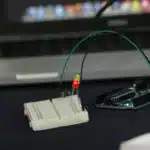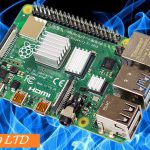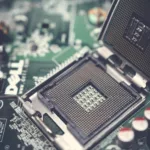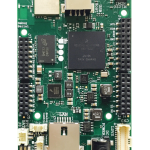
Introduction
RF or Radio Frequency connectors are pivotal components in advanced embedded systems, facilitating high-frequency signals’ seamless transmission and reception. These electrical connectors ensure reliable and efficient communication between components within an embedded system, using RF cables as conjunctions. This article explains the significance of RF connectors in advanced embedded systems, focusing on their types, applications, and key considerations.
Understanding RF Connectors and Advanced Embedded Systems
RF connectors are versatile electrical connectors designed to connect and transmit radio frequency signals between multiple devices. These connectors provide secure and reliable connections, ensuring high-frequency signal transmission seamlessly without compromising signal integrity. RF connectors find applications in wide industrial facilities, including electronics, telecommunications, aerospace, and broadcasting.
Advanced Embedded Systems refers to designing and developing complex and sophisticated embedded systems. These systems integrate multiple technologies, including hardware, software, and firmware, to create intelligent and autonomous systems that perform intricate functions.
The Significance of RF Connectors in Advanced Embedded Systems
Radiofrequency connectors play a crucial role in advanced embedded systems in multiple ways. Advanced embedded systems often require miniaturisation. RF connectors are compact, meeting the required design constraints. These connectors are known to maintain signal integrity by minimising signal distortion, EMI, and signal loss. By providing a secure and low-loss connection between RF devices, RF connectors ensure precise transmission of high-frequency signals, improving system performance. Moreover, RF connectors can handle frequencies by integrating wireless communication technologies into embedded systems. These include Bluetooth, Wi-Fi, and satellite communications.
Types of RF Connectors for Advanced Embedded Systems
There are various radio frequency connectors used in advanced embedded systems, including:
- SMA Connectors: Subminiature version A, SMA connectors are extensively used in embedded systems and are known for their excellent performance and versatility. They can operate up to 18 GHz frequencies and are available in both 50-ohm and 75-ohm versions. They provide good impedance matching and feature a threaded interface. SMA connectors are suitable for various applications, such as wireless communication modules, RF amplifiers, and antennas.
- SMB Connectors: SubMiniature version B, SMB connectors are smaller than SMA connectors and feature a Snap-on coupling mechanism. They are common in applications requiring a compact size and moderate frequency range.
- BNC–Bayonet Neill–Concelman: BNC connectors have a bayonet-style coupling mechanism and are widely used in RF and video applications. Like SMA connectors, BNC connectors come in 50 and 75-ohm versions and are easy to install. These connectors allow efficient connection and disconnection and provide reliable performance at up to 4GHz frequencies.
- MMCX–Micro Miniature Coaxial: MMCX connectors are compact with high-frequency capabilities. They are commonly used in embedded systems that require frequent connection and disconnection. These connectors can support frequencies up to 6GHz and are commonly found in portable devices and wireless communication systems, such as GPS and wireless communication modules.
- U.FL–Ultra Miniature Coaxial: U.FL or IPX connectors are extremely small and lightweight, making them suitable for space-constrained embedded systems. They are commonly found in wireless communication modules, such as Wi-Fi and Bluetooth, and provide reliable performance up to 6 GHz.
- N-Type Connectors: These connectors are larger and more robust. They are often used in applications requiring higher power handling and low signal loss, such as antennas and high-power RF systems.
Key Considerations for RF Connectors in Advanced Embedded Systems
When selecting RF connectors for advanced embedded systems, several key considerations should be ascertained to help ensure connectors’ optimal performance, reliability, and compatibility with the system requirements. These considerations include:
- Connector Type: Choose widely available connectors, compatible with equipment and suitable for desired applications.
- Size and Frequency Range: Consider the connectors’ physical size and form factor to easily integrate them into your design. Choose connectors that handle the desired frequency range without significant signal loss or distortion.
- Impedance Matching: Proper impedance matching is crucial for minimising signal reflections and optimising signal transmission. Mismatching can cause signal degradation and reduced performance.
- Environmental Factors: Select RF connectors based on their environmental ratings to withstand harsh environmental conditions and maintain reliable performance.
- Insertion and Extraction Forces: Consider the insertion and extraction forces required for RF connectors, ensuring ease of use and durability over multiple mating cycles.
RF Connectors in Advanced Embedded Systems: Typical Applications
RF connectors offer various applications in advanced embedded systems, including:
- Wireless Communications
- RF Testing and Measurement
- Telecommunications
- Aerospace and Defense
- Automotive Electronics
- Medical Equipment
- Research and Development
- IoT Devices
- Industrial Automation and Robotics.
The Final Analysis
RF connectors are critical in advanced embedded systems, with great importance in ensuring signal integrity and supporting a wide range of frequencies. By selecting the appropriate RF connectors and considering key factors, embedded system designers can achieve optimal performance and connectivity in their designs. Their widespread use in embedded systems makes them indispensable components for industries and professionals, meeting desired requirements and improving overall system performance and productivity.





















